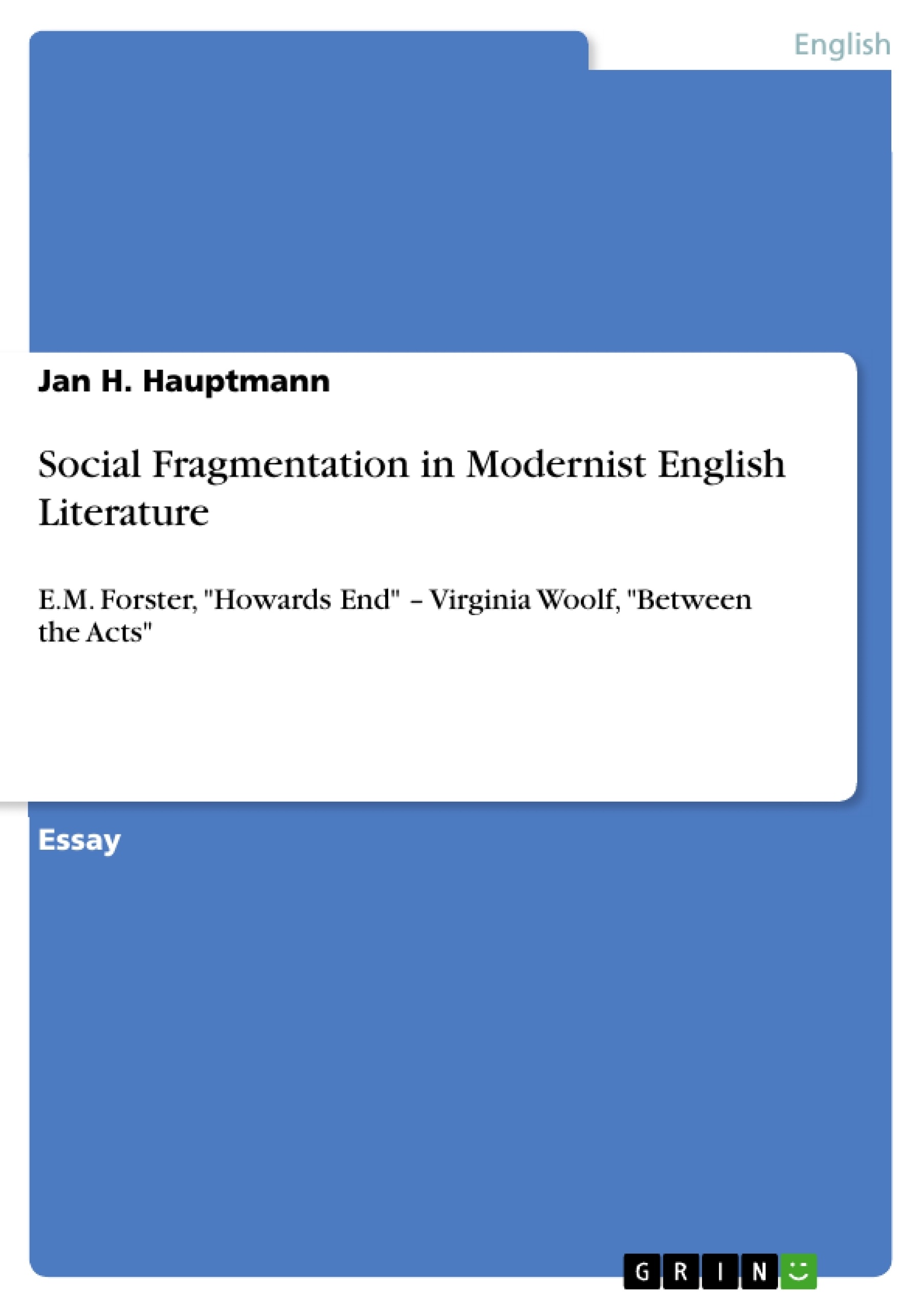This essay will focus on two modernist works by Virginia WOOLF and E. M. FORSTER, which might in fact be regarded as very different concerning their subject matter and style. When FORSTER completed his fourth published novel Howards End in 1910, Europe was on the edge of the First World War, while WOOLF’s novel Between the Acts – finished in November 1942 – was created under the impacts of fascism, the frightening force of the Second World War, and the Blitz in Great Britain. Despite a relatively long time span between these works, the novels are dealing with similar modernist aspects insofar as they are both considering the changes of a society under the influence of modern life, resulting in a social fragmentation caused by political developments within Europe.
This paper will at first reveal the indications of social fragmentations worked into the novels and, secondly, find out if FORSTER and WOOLF are actually providing a solution to the upcoming problems within their artwork.
The political tensions in FORSTER’s Howards End predominantly arise between the characters of the Schlegels and the Wilcoxes, two middle class families with completely different social backgrounds. As the director of a rubber company with African holdings, Henry Wilcox is the epitome of British industrialism and imperialism, while the Schlegel sisters (Margaret and Helen) are representing quite the opposite.
Table of Contents
- Social Fragmentation in Modernist English Literature
- Howards End: A Divided Society?
- Two Families, Two Different Worlds
- The Wilcoxes: A Critique of Imperialism
- Alienation and the Absence of Humanity
- Capitalism and the Divide Between Inner and Outer Life
- Leonard Bast and the Tragedy of Social Inequality
- Toward Union? A Mixed Picture
- Between the Acts: A Bleak Vision of Community
- The Illusion of Unity in the Pageant
- The Discordant Reality of War and Change
- The Past as a Source of Division
- The Breakdown of Communication
- A Community in Crisis
Objectives and Key Themes
This essay examines the portrayal of social fragmentation in two modernist novels, E.M. Forster’s *Howards End* and Virginia Woolf’s *Between the Acts*. It aims to analyze the ways in which these works explore the breakdown of societal cohesion in the face of modernization, imperialism, and war.- The Impact of Modernization on Social Structures
- The Critique of Imperialism and its Consequences
- The Tension Between Inner and Outer Life
- The Role of Class and Social Inequality
- The Failure of Communication and Community
Chapter Summaries
Howards End: A Divided Society?
The first section focuses on *Howards End*, analyzing the contrasting social positions of the Schlegel and Wilcox families. It explores how FORSTER portrays the Wilcoxes’ ruthless pursuit of wealth and their detached attitude towards humanity, contrasting this with the Schlegels’ idealism and sense of spiritual connection. The chapter also examines the impact of capitalist and imperialist ideologies on English society, highlighting the alienation and fragmentation that results from these forces.Between the Acts: A Bleak Vision of Community
This section shifts to *Between the Acts*, examining WOOLF’s portrayal of a seemingly united community in a small English village. However, the chapter explores the façade of this unity, highlighting the underlying tensions caused by war, social change, and the legacy of the past. It analyzes the ways in which communication breaks down, leading to a sense of isolation and fragmentation within the community.Keywords
This essay focuses on social fragmentation, modernism, imperialism, capitalism, class, community, alienation, communication, and the works of E.M. Forster and Virginia Woolf. Key themes explored include the impact of modernization on social structures, the critique of imperialism and its consequences, and the breakdown of communication and community.- Quote paper
- Jan H. Hauptmann (Author), 2006, Social Fragmentation in Modernist English Literature, Munich, GRIN Verlag, https://www.grin.com/document/118351




